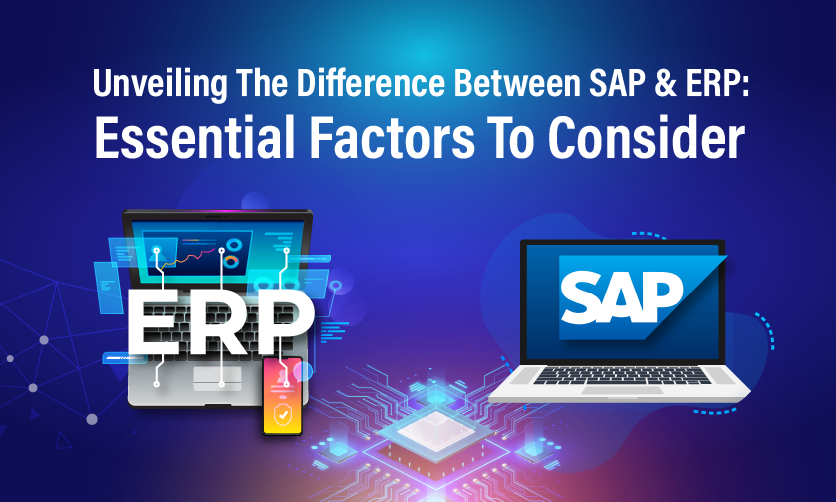
SAP FICO Interview Questions – Prepare for Your Next Interview
Organizations are continuously adopting new advanced technologies to manage their financial and accounting operations. The demand for proficient professionals in SAP Financial Accounting (FI) and Controlling (CO) has become increasingly valuable and high. The growing demand offers you an excellent opportunity to join the SAP-FICO industry. If you are interested in moving your career and want to prepare for the interview then you are in the right place. This guide is designed to provide you with a curated list of important SAP-FICO interview questions.
The guide has an updated list of SAP FICO interview questions and answers that will help you in the preparation. Anyhow if you want to explore the courses to become an SAP FICO specialist check out the SAP FICO Course.
Keep reading to upgrade your knowledge and crack the interviews
Table of Contents
- Define SAP.
- Explain in brief terms SAP FICO.
- What is the main usage of SAP FICO?
- What is meant by the short-end fiscal year?
- What is a year-dependent fiscal year variant?
- What role do financial statements have in a company’s SAP FICO score?
- Explain validations and substitutions in SAP FICO.
- Which application areas use validation and substitutions?
- What do SAP FICO’s posting and accounting period variants mean?
- What are some most important tables in SAP FICO?
- How are output and input taxes managed in SAP FICO?
- What function does SAP FICO’s Financial Statement Version (FSV) serve?
- In a company code, how many Charts of Accounts are possible?
- Describe how the controlling area in SAP FICO and the company code are related.
- What is the significance of financial general ledger accounting?
- What is the purpose of SAP FICO’s company code?
- For a Company Code, how many currencies may you configure?
- Explain the common G/L reports in SAP FI.
- What is blocking a customer in SAP FI?
- How should a firm handle transactions from its various business lines?
- What procedures are followed when uploading G/L?
- What is the purpose of “Document type” in SAP FICO?
- In SAP, at what level the Customer and Vendor codes are stored?
- What Function Do Sales Returns Serve In FI?
- What kinds of COA are there in FI?
- What purpose does the Financial Statement Version (FSV) of SAP FICO fulfill?
- Which exchange rate is used automatically for every SAP transaction?
- Is it possible to calculate depreciation for the day?
- What are the organizational assignments in asset accounting?
- How significant are asset classes? Which asset classes exist?
- In SAP, how are assets and capital WIP (Work in Process) accounted for?
- What is a field status group?
- Where is the internal order useful?
- What distinguishes the “Part Payment” and “Residual Payment” approaches of cash allocation in accounts receivable?
- How is profitability analysis carried out in SAP CO? Which kinds of profitability analysis are there?
- How many different fiscal year versions can be utilized at once?
- Explain recurring entries and state their objective.
- How can we submit the vendor’s opening balance in addition to the vendor’s master data?
- What SAP FICO internal orders are there?
- What function does SAP FICO’s Chart of Accounts serve?
- In SAP FICO, what are parallel and local currencies?
- What is APP in SAP FICO?
- Which vendors in SAP FICO are one-time?
- What do SAP FICO’s “company” and “company code” mean?
- How significant is the SAP FICO GR/IR (Good Received/Invoice Received) clearing Account?
- What is a country Chart of Accounts?
- Define financial accounting.
- What Level Does SAP Store Vendor and Customer Codes?
- Which accounting groups are available for creation in SAP FI’s Account Receivable module?
- In your perspective, what are the tolerances for invoice verification?
- How would one create a credit control section in SAP FI?
- How are input and output taxes handled in SAP?
- What are the several steps in the posting of G/L?
- FI-GL Accounting: What is it and why is it used?
- Which blocks are available for application on a vendor account?
- Why do we use SAP FI?
- What does the GL (General Ledger) master record’s account type field serve as?
- Which standard report formats are available for use in Account Analysis (A/R)?
- What do the terms “cost center” and “profit center” mean in the context of controlling?
- What is a country Chart of Accounts?
- How significant is the SAP FICO GR/IR (Good Received/Invoice Received) clearing account?
- What is the year shift in the SAP calendar?
- Which fields in FI can you log and display changes for?
- How are input and output taxes handled in SAP?
- Which Document Types Are Frequently Used in Fi?
- How Can You Handle Customers’ Partial Payments in Fi?
- In Sap Fi, how would you handle the relationship between two currencies?
- What use do accounts payable serve? How does it connect to G/L?
- What is the use of Accounts Receivables?
- Which accounting groups are available for creation in SAP FI’s Account Receivable module?
- What procedures are followed when uploading G/L?
- How can one apply ‘blocks’ to an SAP FI vendor account?
- Which type of currency rate is chosen by default for all SAP transactions?
- What purpose do credit controls serve?
- Explain the Common Activities Performed In Month Closing In Sap Fi.
- How Is the Customer’s Credit Limit Managed in Fi?
- What function does SAP FICO’s GR/IR clearing account serve?
- How do I create a credit control area in SAP FICO?
- Which other modules does SAP FICO’s “Financial Accounting” integrate with?
- Which fiscal year options are available in SAP FICO?
SAP-FICO Fresher Interview Questions
Let’s first see the SAP FICO Fresher interview questions and answers to clear the basic understanding of the industry.
1. Define SAP.
SAP is a leading enterprise software solution that integrates and streamlines business processes across different departments. It enables efficient data management, insightful analytics, and informed decision-making, which enhances organizational efficiency and effectiveness. SAP is widely recognized for its comprehensive suite of modules that address diverse business needs, such as finance, logistics, human resources, and more.
2. Explain in brief terms SAP FICO.
SAP FICO stands for SAP Financial Accounting (FI) and Controlling (CO). It works within two modules: Financial Accounting (FI) and Controlling (CO).
Financial Accounting (FI): The FI module facilitates the management of financial transactions such as
- General ledger
- Accounts Payable
- Accounts Receivable
- Asset Accounting
- Bank Accounting
- Tax Accounting, and
- Financial Reporting.
With the help of FI, companies can maintain important financial statements like balance sheets, profit and loss statements, and cash flow statements.
Controlling (CO): The CO module focuses on management accounting processes. CO offers tools that companies use for planning, controlling, and monitoring costs and performance across various business processes. It has features to manage cost center accounting, internal orders, product costing, profitability analysis, and more. Thus businesses can use this to evaluate profit, cost allocations, and budgets effectively.
3. What is the main usage of SAP FICO?
The primary purpose is to oversee and govern an organization’s financial accounting and cost management functions.
It simplifies the process recording of financial transactions, creating financial reports, and furnishing crucial data for informed decision-making. It helps to effectively manage finances by ensuring compliance with regulations.
4. What is meant by the short-end fiscal year?
A short-end fiscal year is a fiscal year that is shorter than 12 months. It occurs when an organization changes its fiscal year-end to a date before December 31st. This can happen for several reasons, such as:
- To align the fiscal year with the natural business year.
- To avoid a particular accounting period.
- To comply with government regulations.
5. What is a year-dependent fiscal year variant?
A year-dependent fiscal year variant is a fiscal year variant where the start and end dates of the fiscal year vary from one year to another. This allows flexibility in defining the fiscal year duration based on specific business requirements or changes in reporting periods.
6. What role do financial statements have in a company’s SAP FICO score?
It is an important tool for providing a complete overview of an organization’s financial health, performance, and position. You can use financial statements for making decisions by utilizing data on the profits, cash flow, and liquidity of the organization.
7. Explain validations and substitutions in SAP FICO.
Validations and substitutions are two important functions that are used to apply business rules to data entry.
- Validations make sure that the data that is going to be added meets the specified criteria. Which helps to prevent incorrect or incomplete information from entering into the system.
- Substitutions automatically replace or add data based on predefined conditions that automate adjustments to financial postings. For example, correcting errors or applying rules.
Both functions can help to improve the accuracy of financial data for making better business decisions. It makes sure that financial data follows accounting standards and organizational policies.
8. Which application areas use validation and substitutions?
Following are the mentioned areas where you can apply validation and substitution.
- Financial Accounting (FI): Validations and substitutions are used in FI to ensure the accuracy and completeness of financial data.
- Controlling (CO): It is used in CO to control various processes related to cost accounting.
- Materials Management (MM): Validations and substitutions are used in MM to ensure the accuracy and completeness of inventory data.
- Sales and Distribution (SD): In SD it is used to control various processes related to sales and distribution.
To improve the accuracy and efficiency of data entry in SAP FICO usually validation and substitutions are applied.
9. What do SAP FICO’s posting and accounting period variants mean?
Accounting period variants and posting period variants are two important parts of SAP FICO. It is used to define the structure of the fiscal year and control the open and closed status of posting periods.
- Accounting period variant: It defines the structure of the fiscal year. It specifies the number of posting periods and their duration. It determines how the fiscal year is divided for financial accounting purposes.
- Posting period variant: It is used to control the open and closed status of posting periods within the fiscal year. It monitors when specific periods are available for data entry and when they are closed. It prevents postings to closed periods.
10. What are some most important tables in SAP FICO?
| Table Name | Description | Important Fields |
| BKPF | Accounting Document Header | Transaction Date, Document Type, Account Number |
| BSEG | Accounting Document Item | Amount, Cost Center, Tax Code |
| GLT0 | General Ledger Account Master | Account Number, Account Name, Account Type |
| T004 | Chart of Accounts | Account Number, Account Description, Account Group |
| T077S | Account Group Master | Account Group Number, Account Group Name, Account Type |
| T009 | Fiscal Year Variants | Fiscal Year, Start Date, End Date |
| T880 | Global Company Data | Company Code, Country, Currency |
| KNA1 | Customer Master | Customer Number, Customer Name, Address |
| LFA1 | Vendor Master | Vendor Number, Vendor Name, Address |
11. How are output and input taxes managed in SAP FICO?
- Output taxes (sales tax/VAT) are calculated and posted during sales transactions based on tax rates and customer location. The software uses the tax rates that are mentioned for the customer’s location to calculate the amount of tax that is due. The tax amount is then posted to a tax account.
- Input taxes (purchase tax/VAT) are calculated and posted during purchase transactions based on tax rates and vendor location. The system uses the tax rates that are added for the vendor’s location to calculate the amount of tax that is due. The tax amount is then reflected in a tax account.
12. What function does SAP FICO’s Financial Statement Version (FSV) serve?
A financial statement version (FSV) is used to define the structure and layout of financial statements. It helps in grouping and sequencing general ledger accounts. Also, it allows organizations to design the presentation of financial data according to their specific reporting requirements.
13. In a company code, how many Charts of Accounts are possible?
A company code can have only one Chart of Accounts. The Chart of Accounts shows the standard list of general ledger accounts. It can be used to record financial transactions within the company code. It provides the structure for financial reporting and is specific to each company code in the SAP system.
14. Describe how the controlling area in SAP FICO and the company code are related.
The relationship between the company code and the controlling area is that:
- A company code is a unique identifier for a business unit within an organization. With the help of company code businesses can track financial transactions and prepare financial statements.
- A controlling area is a set of company codes that share a common cost accounting system. Organizations are using this to collect and consider cost data for decision-making purposes.
- A company code can be assigned to only one controlling area.
A controlling area is a higher-level organizational unit that groups one or more company codes.
15. What is the significance of financial general ledger accounting?
- Financial general ledger accounting is the process of recording, classifying, and summarizing all financial transactions of a company.
- It is used to analyze the financial performance of a company by following accounting rules and regulations.
- It is an important part of any organization’s financial management system.
16. What is the purpose of SAP FICO’s company code?
The company code serves as an independent unit for financial accounting and reporting.
- A company code is the smallest organizational unit for which financial statements can be drawn up.
- By using it, you can measure financial transactions and prepare financial statements for a particular business unit within an organization.
- Utilize it to define the Chart of Accounts(It is the list of general ledger accounts used to record financial transactions).
- The company code can be used in different processes like budgeting, forecasting, and reporting.
17. For a Company Code, how many currencies may you configure?
You can configure up to 10 parallel currencies for a company code in SAP FICO, inclusive of the base currency. The base currency is the currency in which the company code’s financial statements are prepared. Parallel currencies are used for recording transactions in other currencies.
18. Explain the common G/L reports in SAP FI.
Standard G/L reports in SAP FI include:
- General Ledger Account Balances: This report shows the balances of all general ledger accounts.
- General Ledger Account Line Items: It shows the details of all transactions that have been posted to a general ledger account.
- Trial Balance: It reflects the balances of all general ledger accounts at a specific point in time.
- Balance Sheet: Use this report to find the assets, liabilities, and equity of the company at a specific point in time.
- Income Statement: This report represents the revenues, expenses, and profits of the company over some time.
- Cash Flow Statement: It shows the inflows and outflows of cash from the company over some time.
- Variance Analysis: It helps to compare actual results to budgeted or planned results.
- Accounting Period Closing Report: This report shows the status of the accounting period.
- Financial Statement Version Report: This report shows the structure and layout of the financial statements.
19. What is blocking a customer in SAP FI?
Blocking a customer is a process of preventing a customer from making any further transactions with the company. Due to many reasons, customers have blocked customers not paying their invoices, or if the customer is suspected of fraud.
There are two types of customer blocking:
- Account blocking: This prevents the customer from making any transactions with the company. This includes sales, purchases, and payments.
- Document blocking: This prevents the customer from creating new documents, such as sales orders or invoices.
You need to use the FD05 transaction to block a customer in SAP FI. This helps you to block a customer for a specific reason and a specific period.
20. How should a firm handle transactions from its various business lines?
The best way to manage transactions from different business lines within a company is to use a hybrid system. It uses a combination of both centralized and decentralized systems. It helps you to get the benefits of both processes.
Here are some of the benefits of using a hybrid system:
- It can help to ensure that all transactions are recorded accurately and that there is no duplication of data.
- It can be more flexible and can be easier to manage if the needs of the business lines change.
- It can be more cost-effective than a fully centralized system.
21. What procedures are followed when uploading G/L?
To upload general ledger (G/L) data into a system, you need to follow these steps:
- Prepare the data: Gather and organize the data, including account numbers, descriptions, and transaction details.
- Validate the data: Check the accuracy and completeness of the data to prevent errors during the upload process.
- Format the data: Format the data according to the system requirements, making sure that the field types and file formats are correct.
- Set up master data: Make sure that the relevant master data, such as the chart of accounts and cost centers, are properly configured.
- Map and test the data: Map the data columns to the system fields, and then conduct a test upload with a subset of the data to identify and resolve any issues.
- Upload the data and validate: Execute the upload process, verify the data integrity, reconcile the balances, and generate reports as needed.
22. What is the purpose of “Document type” in SAP FICO?
Document type is a label that identifies different types of financial transactions. It helps to determine how the transaction is processed and reported in the system. Each document type has its own set of posting rules, account assignments, and processing controls.
For example, a document type might be used to differentiate between regular accounting documents, credit memos, invoices, and more. By assigning the appropriate document type to each transaction, businesses can ensure that their financial data is handled consistently and accurately. This can help to streamline reporting and ensure that businesses comply with regulatory requirements.
23. In SAP, at what level the Customer and Vendor codes are stored?
Customer and vendor codes are stored at the client level. The client is the highest organizational unit in SAP, representing an independent business entity or company. Customer and vendor master data are maintained at the client level to ensure that the data is consistent and uniform across all applications and modules in the SAP system.
This centralized storage of customer and vendor data allows for efficient data management and accurate reporting. It also helps in sharing information across different functional areas within the organization. It maintains data integrity and avoids duplicate records, which can contribute to effective business operations and decision-making.
24. What Function Do Sales Returns Serve In FI?
Sales returns in SAP Financial Accounting (FI) are essential for recording and managing the financial aspects of products or goods that customers return to a company. Sales returns serve several functions in FI, including:
- Recording and tracking: Sales returns help to accurately record the return of products by customers. This includes updating the relevant accounts, such as accounts receivable and sales revenue, to reflect the reversal of the original sales transaction.
- Reversal of revenue: Sales returns impact the revenue recognition process. When a customer returns a product, the income associated with the original sale needs to be reversed or adjusted so that it will accordingly reflect the decrease in revenue.
- Adjusting accounts receivable: Accounts receivable are reduced when a customer returns goods. The outstanding payment for the returned goods is adjusted, reflecting the decreased amount receivable from the customer.
- Inventory management: Sales returns affect inventory levels. The returned products are typically added back to the inventory, adjusting the stock levels for accurate inventory management.
- Financial reporting: Accurate recording of sales returns ensures that financial reports, such as income statements and balance sheets, provide a true representation of the company’s financial position. The impact of returns is reflected in these reports.
- Customer relations: Handling sales returns properly contributes to positive customer relations. It ensures transparency in the return process and assists in issuing refunds or replacements promptly.
- Compliance and audit: Properly managing sales returns ensures compliance with accounting standards and regulations. It also facilitates audit trails by providing accurate records of return transactions.
- Credit management: Sales returns impact credit management processes. The customer’s credit balance is adjusted based on the value of returned goods, ensuring accurate credit assessments for future transactions.
25. What kinds of COA are there in FI?
In Financial Accounting (FI), the Chart of Accounts (COA) is a list of accounts that are used to categorize financial transactions. There are two main types of COAs:
- Operative COA: This is the primary COA that is used for day-to-day financial transactions. It includes accounts for revenue, expenses, assets, liabilities, and equity.
- Group COA: This is a higher-level COA that combines data from multiple operative COAs. It is used for reporting and analysis purposes.
Companies can customize the COA to meet their specific needs. This customization can include adding or modifying account groups, codes, and descriptions. This customization helps to tailor the COA to reflect the company’s organizational structure, industry-specific requirements, and reporting needs.
26. What purpose does the Financial Statement Version (FSV) of SAP FICO fulfill?
Financial Accounting (FI), the Financial Statement Version (FSV) is a tool that helps businesses to create customized financial statements and reports. The FSV defines the structure and layout of financial statements. It determines which general ledger accounts and their balances should be included and how they should be presented in the reports.
Here are some of the key purposes of the FSV:
- Customized reporting: The FSV allows businesses to create customized financial statements that meet their unique reporting needs. Businesses can select and arrange relevant accounts to make the financial statements more relevant and meaningful for decision-makers.
- Grouping and aggregation: The FSV allows businesses to group and aggregate accounts in ways that align with their reporting structure. This enables businesses to present summarized data and subtotals for various sections of the financial statements.
- Multiple reporting views: Businesses can create multiple FSVs to support different reporting perspectives, such as regulatory reporting, management reporting, and industry-specific reporting. Each FSV can have its configuration of accounts and layout.
- Consistency: The FSV ensures consistency in financial reporting by specifying uniform criteria for including accounts and determining their sequence in financial statements. This eliminates variations in reporting across different periods.
- Compliance: The FSV aids in compliance with accounting standards and regulatory requirements. It helps businesses generate financial statements that adhere to specific standards and guidelines.
- Comparability: The FSV allows for easy comparison of financial data across different periods. By maintaining consistent reporting structures, trends, and changes in financial performance can be analyzed effectively.
- Data integrity: The FSV helps ensure data accuracy and integrity by preventing incorrect accounts from being included in the financial statements. Thus it reduces the risk of errors.
27. Which exchange rate is used automatically for every SAP transaction?
The default exchange rate used for every transaction is typically the system exchange rate. This rate is maintained in the system and is used for currency conversion unless a specific exchange rate is provided. The system exchange rate is often based on central bank rates or other predefined sources. It is used for standard currency conversions within SAP modules like Finance (FI) and Controlling (CO).
Organizations can configure SAP to use different exchange rate types based on their specific business requirements and preferences. For example, an organization might want to use a specific exchange rate provider or a historical exchange rate.
28. Is it possible to calculate depreciation for the day?
Yes, it is possible to calculate depreciation for a specific day in SAP and other financial systems. Depreciation is typically calculated based on the asset’s useful life and original cost and then allocated over time. To calculate depreciation for a specific day, you need to follow these steps:
- Calculate the daily depreciation rate. This is done by dividing the annual depreciation amount by the number of days in the year.
- Calculate the depreciation for the day. You can calculate this, by multiplying the daily depreciation rate by the number of days for which you want to calculate depreciation.
- Record the entry. It is created by a journal entry in your financial system to reflect the depreciation expense for a specific day. The depreciation expense account is debited, and the accumulated depreciation account is credited.
It is important to note that the calculation method may vary depending on your organization’s accounting policies, the asset’s characteristics, and the applicable accounting standards. Using an integrated system like SAP allows for accurate and automated depreciation calculations. It takes into account variables such as the asset’s acquisition date, useful life, and any specific depreciation methods employed by the organization.
29. What are the organizational assignments in asset accounting?
Organizational assignments in asset accounting are ways to categorize and structure assets within an organization for effective management and reporting. These assignments include:
- Company code: Assets are assigned to specific company codes, which represent distinct legal entities or units within the organization. This ensures that assets are properly tracked and reported for each company code.
- Chart of depreciation: Each asset is linked to a chart of depreciation, which defines the depreciation methods and rules that will be used for that asset. This allows for different assets to be depreciated in different ways, depending on their accounting treatment.
- Asset location: Assets can be assigned to physical locations or organizational units, which can help with tracking the whereabouts of assets and ensuring that they are properly maintained.
- Business area: Assets can be assigned to different business areas, which can help with profit center analysis and cost allocation based on the different segments of the business.
- Cost center and internal order: Assets can be linked to cost centers or internal orders. It can help with the precise allocation of costs and tracking of specific projects or activities.
- Functional area: Assigning assets to functional areas allows for detailed cost analysis and reporting based on the functional divisions of the organization.
These organizational assignments help to ensure that asset-related activities are accurately recorded, reported, and analyzed within the organization’s structure. This contributes to efficient asset management and financial transparency.
30. How significant are asset classes? Which asset classes exist?
Asset classes are important in SAP Asset Accounting because they help to categorize and manage different types of assets. Asset classes provide a way to define common attributes, valuation methods, and depreciation rules for groups of similar assets. It helps to streamline asset management, reporting, and analysis.
Here are some of the specific benefits of using asset classes:
- Uniformity: Asset classes ensure that assets with similar characteristics are treated uniformly. This helps to ensure consistent reporting and valuation of assets.
- Simplified configuration: Asset classes allow you to define settings at the asset class level, rather than having to configure individual settings for each asset. This makes it more efficient to manage assets.
- Standardized depreciation: Asset classes allow you to define default depreciation methods, useful life, and other depreciation-related settings for similar assets. This helps to ensure that depreciation is calculated consistently for assets within the same class.
- Customization: You can customize attributes within an asset class to suit specific requirements, while still retaining common characteristics. This allows you to tailor asset classes to the specific needs of your organization.
- Reporting and analysis: Grouping assets into classes enables easy reporting and analysis based on common characteristics, such as depreciation expenses or asset values. It can help you to track the performance of your assets and make informed decisions about your asset management strategy.

31. In SAP, how are assets and capital WIP (Work in Process) accounted for?
Asset Accounting, assets, and capital work in process (WIP) are accounted for using specific processes and transactions to ensure accurate valuation and reporting.
Assets:
- Acquisition: When an asset is acquired, a journal entry is recorded to debit the appropriate asset account and credit the relevant liability or cash account.
- Depreciation: Depreciation is calculated based on the asset’s useful life and depreciation method. A periodic journal entry is made to debit the depreciation expense account and credit the accumulated depreciation account.
- Retirement: When an asset is retired, its carrying value is removed from the balance sheet. A journal entry is recorded to debit the accumulated depreciation account, debit any remaining asset value, and credit the relevant gain/loss account.
Capital Work in Process (WIP):
- Acquisition: When a capital WIP item is added, a journal entry is recorded to debit the WIP account and credit the relevant expense or liability account.
- Capitalization: Once the WIP item is completed and ready to be capitalized, a journal entry is made to debit the relevant asset account and credit the WIP account.
- Depreciation: After capitalization, the asset follows the regular depreciation process as explained earlier.
It is important to note that the accounting treatment of assets and capital WIP may vary based on the organization’s policies, industry, and local accounting standards.
32. What is a field status group?
A field status group in SAP is a set of rules that determines how fields are displayed and entered in financial transactions. These rules are based on the business requirements and user roles. Field status groups are assigned to transaction types, which means that different transactions can have different field status groups. This allows organizations to customize data entry processes, enforce data consistency, and ensure accurate financial reporting.
Field status groups play a crucial role in tailoring the user experience and maintaining data integrity within SAP’s financial modules. For example, a field status group can be used to make a field mandatory for certain users and optional for others.
It can help to ensure that all required data is entered into transactions. Field status groups can also be used to suppress fields that are not relevant to specific users. It can help to prevent errors and improve the efficiency of data entry
33. Where is the internal order useful?
Internal orders are a way to track and manage costs for specific projects, tasks, or activities within an organization. It can be used to monitor expenses, allocate resources, and manage budgets. Internal orders are used in a variety of scenarios, such as research and development projects, marketing campaigns, and maintenance tasks.
It can help organizations analyze the financial performance of their projects and make informed decisions about how to allocate resources. Internal orders are an important tool for maintaining cost transparency and aligning budgetary control with organizational objectives.
34. What distinguishes the “Part Payment” and “Residual Payment” approaches of cash allocation in accounts receivable?
There are two ways to allocate incoming payments to outstanding invoices: part payment and residual payment.
Part-payment allocates the payment to specific invoices based on the payment amount. If the payment amount matches the full amount of an invoice, the invoice is considered fully paid. If the payment amount is less than the invoice amount, the payment is allocated to the oldest outstanding invoice. The remaining amount of the invoice remains open for future payments.
Residual payment allocates the payment to one or more invoices in a specific order of preference. If the payment amount matches the full amount of an invoice, the invoice is fully paid and closed. If the payment amount is greater than the invoice amount, the system identifies the next oldest open invoice and allocates the remaining payment amount to it. This process continues until the payment is fully allocated or no more open invoices are available.
The part payment approach focuses on closing invoices partially based on the received payment, while the residual payment approach aims to allocate the full payment amount by matching and closing invoices sequentially. Organizations may choose one of these approaches based on their business processes and customer preferences for efficient cash allocation and accurate account reconciliation.
Hope you have read the SAP-FICO interview questions carefully. Now we are moving to the next part. Here we will discuss SAP-FICO interview questions for experienced candidates.
As they have a basic understanding and industry knowledge, we have prepared the more detailed SAP FICO interview questions for them. It will add value to their knowledge and skills.
SAP-FICO Interview Questions for Experienced Candidates
35. How is profitability analysis carried out in SAP CO? Which kinds of profitability analysis are there?
Profitability analysis is a way to evaluate how profitable different parts of your business are. There are three main types of profitability analysis:
- Cost Center Accounting (CCA): CCA analyzes the costs and benefits of specific functional areas or departments. It can help you make better internal management decisions and budgets more effectively.
- Profit Center Accounting (PCA): PCA assesses the revenue, costs, and profit of distinct business units or segments. It can help you make better resource allocation decisions and strategic decisions.
- Profitability Analysis (CO-PA): CO-PA analyzes profitability across dimensions like products, customers, regions, etc. It can help you identify the drivers of profitability and make better decisions to improve your overall financial performance.
Each type of profitability analysis can help you understand different levels of profitability and make informed decisions to improve your business.
36. How many different fiscal year versions can be utilized at once?
You can set up and use multiple fiscal year versions at the same time. There is no limit to the number of fiscal year versions that can be used in SAP. Companies can create and activate different fiscal year versions to meet their specific business needs, accounting practices, and reporting requirements. This flexibility allows companies to use different fiscal year structures and align their financial reporting with local regulations and global standards.
37. Explain recurring entries and state their objective.
Recurring entries are a way to automate repetitive accounting tasks in SAP FI. It is pre-defined journal entries that are automatically posted at specific intervals, such as monthly or quarterly. This automation saves time, reduces errors, ensures consistency, and maintains accurate financial records.
Benefits of recurring entries:
- Saves time: Recurring entries can automate repetitive tasks, freeing up time for accountants to focus on more complex tasks.
- Reduces errors: It can help to reduce errors by eliminating the need to manually enter the same information over and over again.
- Ensures consistency: It ensures consistency in accounting records by ensuring that the same transactions are recorded in the same way each time.
- Maintains accurate financial records: Recurring entries can help to maintain accurate financial records by ensuring that all transactions are recorded on time.
- Streamlines regular accounting processes: You can streamline regular accounting processes by automating tasks that would otherwise be done manually.
- Allows organizations to focus on more complex financial tasks: It allows organizations to focus on more complex financial tasks by automating repetitive tasks.
38. How can we submit the vendor’s opening balance in addition to the vendor’s master data?
Submitting the vendor’s opening balance is important for accurate financial management in SAP. Here are the steps on how to do it:
- Create the vendor’s master data in SAP. It includes the vendor code, name, address, payment terms, and other relevant details.
- Gather the vendor’s opening balance details, such as the outstanding payable amount, due dates, and any relevant invoices or transactions that contribute to the opening balance.
- Create a journal entry using transaction code FB50 (or similar). Debit the appropriate vendor account with the opening balance amount, and credit the relevant account (such as a bank account) to balance the entry.
- If some open invoices or transactions make up the opening balance, you can assign them to the journal entry to ensure accurate reconciliation.
- After posting the opening balance entry, reconcile the vendor account to confirm that the opening balance matches the actual outstanding payable.
- Update the vendor’s master data to reflect the correct opening balance and other relevant information.
- Regularly reconcile vendor accounts to ensure accuracy and resolve any discrepancies promptly.
- Store the supporting documents related to the opening balance entry for future reference and audit purposes
39. What SAP FICO internal orders are there?
SAP’s Controlling (CO) module has various types of internal orders that can be used for cost tracking and management purposes.
- Overhead orders are used to collect indirect costs that cannot be directly assigned to cost objects. These costs can then be allocated to relevant cost centers or projects.
- Investment orders are used to manage capital investment projects and track related costs. It helps organizations to monitor expenses associated with acquiring or constructing fixed assets.
- Accrual orders hold costs temporarily for expected but unposted expenses. It will help organizations to accurately calculate accruals and match expenses with revenues.
- Budget orders are used to control and monitor budgeted expenses for specific activities or projects. It helps organizations to compare actual costs with budgeted amounts.
- Maintenance orders are used to manage the costs of maintenance activities, such as equipment repairs. Organizations can allocate maintenance-related costs to responsible cost centers.
40. What function does SAP FICO’s Chart of Accounts serve?
It is a list of accounts that are used to record financial transactions. It helps to organize and classify financial information, making it easier to find and report on. The COA also helps to ensure that financial information is consistent across the organization, which is important for accurate reporting and compliance with accounting regulations.
Here are the key functions of the COA:
- Organization and classification: The COA helps to organize financial transactions into logical categories, such as assets, liabilities, equity, income, and expenses. This makes it easier to find and report on financial information.
- Uniformity and standardization: The COA ensures that financial information is captured, classified, and presented consistently across the organization. It is important for accurate reporting and compliance with accounting regulations.
- Accurate reporting: The COA forms the basis for generating financial statements and reports. This information can be used to analyze financial performance and make informed business decisions.
- Ease of data retrieval: With a well-defined COA, specific financial information can be easily located and accessed. Thus it makes it easier to generate reports and analyze data.
- Integration and compliance: The COA integrates with other SAP modules and supports compliance with accounting regulations. This makes it a cornerstone of efficient financial operations.
41. In SAP FICO, what are parallel and local currencies?
There are two types of currencies: local currencies and parallel currencies.
- Local currency: This is the currency of the country where the company code is established. All primary financial transactions and reporting are conducted in this currency. It complies with legal requirements and taxation standards of the operating country.
- Parallel currencies: These are additional currencies that can be used alongside the local currency. It facilitates reporting and analysis in multiple currencies, which is essential for international business scenarios or consolidated group reporting. Parallel currencies enable organizations to present financial data in different currency perspectives while maintaining core records in the local currency.
For example, a company based in the United States may use the US Dollar (USD) as its Local Currency for daily transactions. However, if it has operations in Europe, it might also report financial results in Euros (EUR) as a Parallel Currency. To present financial information in the currency relevant to its European stakeholders.
Check out the related SAP-FICO articles for more information
Featuring the Best Training of SAP FICO Courses in India
Learning SAP FICO Courses significantly can boost your professional growth
42. What is APP in SAP FICO?
APP stands for Automatic Payment Program. It automatically pays vendors based on predefined criteria and payment terms. Organizations can use it to manage their accounts payable efficiently, ensuring timely and accurate payments while minimizing manual intervention.
Here are some of the things that APP considers when making payments:
- Due dates: The APP makes sure that payments are made on time to avoid late fees.
- Cash discounts: The APP takes into account any cash discounts that are available to maximize savings.
- Payment priorities: The APP can be configured to prioritize payments to certain vendors, such as those that provide essential goods or services.
APP can help organizations improve their cash flow, maintain good relationships with vendors, and reduce the risk of late payments. If you are looking for a way to streamline your accounts payable process, APP is a great option.
43. Which vendors in SAP FICO are one-time?
One-time vendors are those with whom a company does not have frequent or regular business transactions. They are typically used for temporary or non-recurring purposes, such as one-off purchases or services.
One-time vendors do not require extensive master data setup, as it can be created and maintained quickly and easily. This makes them a good option for occasional payments or expenses that do not involve regular vendor-account relationships
44. What do SAP FICO’s “company” and “company code” mean?
A company is a legal entity or organization that operates as a business unit. It has multiple financial aspects, including company codes, business units, and operations.
A company code is a distinct financial entity within an organization. It has its own set of financial accounts, transactions, and reporting. Multiple company codes can operate under a single company umbrella.
45. How significant is the SAP FICO GR/IR (Good Received/Invoice Received) clearing Account?
It is a tool that helps to ensure the accuracy of financial records. It does this by reconciling discrepancies between goods received and invoices received. This helps to prevent financial misstatements and ensures that expenses are matched with revenues in the correct accounting period.
The account also strengthens internal controls by flagging discrepancies and providing an audit trail for differences and adjustments. This helps to foster collaboration between procurement and accounts payable teams and streamline dispute resolution.
It is an important tool for safeguarding financial accuracy, supporting procurement efficiency, and contributing to the overall integrity of financial reporting and controls within an organization.
46. What is a country Chart of Accounts?
A country-specific Chart of Accounts (COA) in SAP FICO is a customized financial structure that complies with the accounting standards and regulations of a specific country. It is a set of categorized and organized accounts that are used to record financial transactions and generate financial reports according to the unique requirements of that country’s accounting framework.
A country COA typically includes specific account codes, descriptions, and grouping structures that align with local accounting practices. This ensures that financial data is captured, classified, and reported in a manner that complies with local legal and taxation standards. This makes it easier for companies to meet regulatory requirements and produce accurate financial statements for that particular country.
47. Define financial accounting.
Financial accounting is the process of tracking and reporting a company’s financial transactions in a standard way. It involves preparing financial statements that show how much money the company makes, spends, and has on hand over some time.
The main goal of financial accounting is to provide accurate and reliable information to external stakeholders, such as investors, creditors, and regulators. It will help to make informed decisions about the company. Financial accounting follows established accounting principles and standards, which ensures that financial statements are consistent, transparent, and comparable.
48. What Level Does SAP Store Vendor and Customer Codes?
Vendor and customer codes are stored in a central location, called the client. This means that all vendor and customer data is stored in one place and can be accessed by all company codes within the client.
The client is the highest organizational level in SAP, so this central storage of vendor and customer data ensures that data is consistent and efficient across different company codes and business units.
49. Which accounting groups are available for creation in SAP FI’s Account Receivable module?
FI’s Accounts Receivable module, you can create various accounting groups to effectively manage customer accounts:
- Customer Groups: Classify customers based on industry, location, or business type.
- Account Groups: Define customer master record structure and characteristics.
- Reconciliation Account Groups: Categorize general ledger accounts for customer transactions.
- Pricing Procedure Groups: Set pricing calculation logic for different customer segments.
- Payment Terms Groups: Group payment terms for specific customer segments.
- Dunning Area Groups: Organize areas for managing overdue customer payments.
- Credit Control Area Groups: Define credit limits and rules for customer credit management.
- Tolerance Groups: Define allowed payment term variations for flexibility.
These groups streamline customer management, financial reporting, and credit control processes in SAP’s Accounts Receivable.
50. In your perspective, what are the tolerances for invoice verification?
In invoice verification, tolerances are allowed for deviations in different aspects of the invoice matching process. These tolerances include:
- Price tolerance: It allows for slight differences between the invoice price and the purchase order price to accommodate minor price fluctuations.
- Quantity tolerance: It allows for variations in the quantity received compared to the quantity ordered within a defined range.
- Currency tolerance: You can use it for minor differences in currency exchange rates between the invoice and the local currency.
- Tax tolerance: Use it for small variations in tax amounts due to rounding or calculation differences.
- Amount rounding tolerance: This accounts for discrepancies resulting from rounding in invoice amounts.
- Delivery costs tolerance: Is is used for small differences in delivery costs specified in the invoice.
- Overall tolerance: It is defined as a comprehensive tolerance that considers various parameters to determine acceptable discrepancies.
All tolerances mentioned above streamline the invoice verification process by automating approval for minor discrepancies and reducing manual intervention.
51. How would one create a credit control section in SAP FI?
It is a multi-step process that involves defining a new credit control area, assigning it to a company code, setting credit limits for customers, assigning it to sales areas, configuring credit check rules, and activating credit management.
Here are the steps in more detail:
- Open transaction code “OB45” in SAP or navigate through SPRO > Financial Accounting > Accounts Receivable and Accounts Payable > Credit Management > Master Data > Define Credit Control Area.
- Click “New Entries” and provide a unique key and description for the credit control area. Specify the currency for credit limits.
- Save the new credit control area.
- Use transaction code “OB38” to assign the credit control area to the relevant company code.
- Set credit limits for customers using transaction code “FD32” (individual customer) or “VD32” (customer credit group).
- Link the credit control area to sales areas for automatic credit checks during sales order processing using transaction code “OVFL.”
- Define credit check rules, tolerances, and actions in SAP’s credit management settings.
- Activate credit management for specific sales document types using transaction code “OVA8.”
These steps may vary slightly based on your SAP version and configuration settings. Consult with your SAP experts or administrators can help ensure accurate setup according to your organization’s needs.
52. How are input and output taxes handled in SAP?
Input and output taxes are managed through tax codes and automatic tax determination. Here is a brief overview of how they are handled:
- Input taxes (purchase process)
- Purchase orders: Tax codes are assigned based on the vendor’s location and item category.
- Goods receipt: Input tax is posted as payable.
- Invoice verification: The actual input tax is calculated and adjusted in accounting.
- Output taxes (sales process)
- Sales orders: Tax codes are determined by the customer’s location and item category.
- Billing: Output tax is calculated and posted as receivable.
- Accounts receivable: Output tax liability is recorded.
- Tax reporting: SAP generates reports for tax liability and compliance.
- Reconciliation: Regular reporting ensures accurate tax reconciliation.
SAP uses tax codes to determine the amount of tax that is due on a transaction. Tax codes are assigned to vendors, customers, items, and locations. When a transaction is created, SAP uses the tax codes to calculate the amount of tax that is due. The tax is then posted to the appropriate accounts in SAP.
SAP also generates reports that can be used to track tax liability and compliance. These reports can be used to ensure that taxes are being calculated and paid correctly. Regular reconciliation of tax accounts can help to ensure that taxes are accurate.
53. What are the several steps in the posting of G/L?
Posting general ledger (G/L) entries in SAP is a multi-step process. It involves opening a transaction code, entering the document header, entering line items, checking and saving the document, posting the document, and assigning a document number.
Here are the steps in more detail:
- Open the transaction code “FB50” (general ledger journal entry) or “FB01” (document entry).
- Provide document date, posting date, document type, and reference details.
- Input G/L account numbers, amounts, and descriptions for debit and credit entries.
- Review the document and save it if accurate.
- Click “Post” to record the journal entry in the ledger.
- The system assigns a unique document number to the entry.
- (Optional) Display the posted document, reverse it if needed (FB08), or park it for later posting (F-65).
Properly following these steps ensures accurate financial record-keeping in SAP.
54. FI-GL Accounting: What is it and why is it used?
FI-GL accounting, or Financial Accounting General Ledger, is a module in SAP that is used to record and manage financial transactions. It is a core component of SAP’s financial suite and is used by businesses of all sizes to track their financial performance.
FI-GL accounting allows businesses to record a wide variety of financial transactions, including:
- Sales and purchases: FI-GL accounting can be used to record sales and purchases of goods and services. This information can then be used to track revenue, expenses, and profitability.
- Payroll: FI-GL accounting can be used to record payroll transactions, including salaries, wages, and benefits. Then it is e used to track labor costs and compliance with payroll regulations.
- Bank and cash: FI-GL accounting can be used to record bank and cash transactions, including deposits, withdrawals, and transfers. It can be used to track cash flow and liquidity.
- Assets and liabilities: FI-GL accounting can be used to record assets and liabilities, such as accounts receivable, accounts payable, and inventory. Use it to track the financial health of the business.
- Cost accounting: FI-GL accounting can be used to track costs, such as direct materials, direct labor, and overhead. You can then use it to price products and services and to make decisions about product mix and pricing.
FI-GL accounting is a powerful tool that can be used to track and manage a wide variety of financial transactions. It is an essential component of any business’s financial management system.
55. Which blocks are available for application on a vendor account?
The following are the blocks that are available for application on a vendor account:
- Payment block: This block prevents payments from being made to the vendor until the block is removed. It is used to temporarily stop payments for specific reasons, such as pending dispute resolution.
- Posting block: It prevents any posting activities related to the vendor account until the block is removed. It ensures that no new transactions can be recorded for the vendor.
- Purchasing block: This is used to prevent new purchase orders from being created for the vendor until the block is removed. It helps control procurement activities for specific vendors.
- Invoice block: You can use it to prevent new invoices from being posted to the vendor account until the block is removed. It ensures that invoices are not processed until necessary actions are taken.
- Order block: This block prevents the creation of new sales orders or contracts related to the vendor until the block is removed. It is useful when there are issues related to the vendor’s ability to fulfill orders.
- Delivery block: Use this to prevent deliveries from being processed for the vendor’s sales orders until the block is removed. It is used when there are issues with product availability or other concerns.
- Account block: By implementing you can prevent any account-related activities, including financial transactions, for the vendor until the block is removed. It offers a comprehensive block on all activities involving the vendor account.
56. Why do we use SAP FI?
Here are some of the benefits of using SAP FI:
- Accurate financial recording: It ensures that all financial transactions are accurately recorded, which helps to maintain a reliable financial database.
- Financial reporting: It can generate essential financial statements like balance sheets, income statements, and cash flow statements. It can be used to analyze financial performance and make informed decisions.
- Regulatory compliance: It can help organizations follow financial regulations, taxation laws, and auditing standards by providing accurate financial data and reports.
- Transparent audit trail: It maintains an audit trail of financial activities, which makes it easy to track and audit transactions.
- Centralized data: It centralizes financial data, which allows multiple departments to access and work with consistent information.
- Budgeting and planning: It can be used to create budgets, track expenses, and compare actuals against planned figures.
- Financial control: It will help organizations monitor and control financial activities, preventing unauthorized or erroneous transactions.
- Decision support: It can provide real-time financial insights for informed decision-making, helping organizations allocate resources effectively.
- Efficiency and automation: It can automate financial processes, which reduces manual errors and accelerates tasks like payment processing and invoicing.
- Integration: It can seamlessly integrate with other SAP modules, enabling a comprehensive view of an organization’s operations.
- Consolidation: For companies with multiple subsidiaries, SAP FI can support financial consolidation by aggregating data from various entities.
- Data analysis: It can be used to analyze financial data and identify trends, helping organizations understand their financial performance over time.
57. What does the GL (General Ledger) master record’s account type field serve as?
SAP FI is a software system that helps organizations keep track of their money. It can be used to record financial transactions, generate financial statements, and comply with financial regulations. SAP FI also allows organizations to create budgets, track expenses, and make informed financial decisions.
58. Which standard report formats are available for use in Account Analysis (A/R)?
In Account Analysis (A/R) in SAP, various standard report formats aid in analyzing accounts receivable transactions. These include:
- Open Item List: Displays outstanding items with customer details, aiding in tracking pending invoices.
- Customer Balances: Summarize customer balances to identify outstanding amounts.
- Aging Reports: Categorizes overdue invoices by age, facilitating management of payment collections.
- Dunning Letters: Generates reminders for overdue payments, containing invoice details and charges.
- Customer Statements: Provides a summary of customer transactions, including invoices and payments.
- Payment History: It shows payment records that aid in reconciling accounts.
- Cash Receipts: Lists received payments that help to monitor cash flow.
- Customer Analysis: Offers insights into payment behaviors for decision-making.
- A/R Aging Summary: Provides an overview of receivables aging.
These reports streamline accounts receivable management, ensuring timely payments and healthy financial operations.
59. What do the terms ” cost center” and “profit center” mean in the context of controlling?
Cost centers and profit centers are two important concepts used to track and analyze financial performance.
- Cost centers are units, departments, or locations that incur costs but do not directly generate revenue. They are used to track expenses and allocate resources efficiently.
- Profit centers are segments of the organization that generate revenue and incur costs. They operate as independent business units within the larger organization and are responsible for both their revenue and cost performance.
Both cost centers and profit centers can be used to gain insights into financial performance, aid in decision-making, and support effective resource allocation.
60. What is a country Chart of Accounts?
A country Chart of Accounts is a list of accounts that businesses use to record their financial transactions in a specific country. It is based on the accounting standards and regulations of that country. It helps businesses to keep their financial records accurate and compliant.
Different countries have different Chart of Accounts, so it is important to use the correct one for the country in which you are operating. Using the wrong Chart of Accounts can lead to inaccurate financial records and non-compliance with local regulations.
61. How significant is the SAP FICO GR/IR (Good Received/Invoice Received) clearing account?
It is a temporary account that helps match goods received from vendors with the corresponding invoices. It makes sure that financial records are accurate and that payments are made to vendors in the correct amount.
When goods are received from a vendor, the GR/IR clearing account is debited to reflect the increase in inventory. When the invoice is received, the GR/IR clearing account is credited to offset the initial debit entry. It ensures that the financial records match the actual transactions.
The GR/IR clearing account is important because it can help identify discrepancies between goods received and invoices received. If there is a discrepancy, it can be investigated and resolved before the payment is made to the vendor. It helps to ensure that payments are made accurately and that financial records are accurate.
The GR/IR clearing account also helps to ensure that inventory is properly valued. By matching goods received with invoices, the company can ensure that the inventory on hand is accurately reflected in the financial records.
62. What is the year shift in the SAP calendar?
A year shift is a setting that allows you to define a fiscal year that does not align with the standard calendar year (January to December). It is useful for companies that have fiscal years that start in different months or that span across two calendar years.
When you set up a year shift, you can specify the start and end dates of your fiscal year, as well as the number of periods in your fiscal year. SAP will then use this information to correctly attribute all financial transactions and reporting to the appropriate fiscal year even if it spans two calendar years.
It is important for businesses that need to comply with accounting standards and regulations. As it ensures that their financial data is accurately managed based on their specific fiscal reporting periods.
63. Which fields in FI can you log and display changes for?
You may log changes to and display a wide range of fields in FI. Among the most popular fields are:
- Account: The account number of the affected account.
- Document number: The document number of the transaction that caused the change.
- Change date: The date on which the change was made.
- Change time: The time at which the change was made.
- Change user: The user who made the change.
- Old value: The old value of the field.
- New value: The new value of the field.
Other fields, such as the transaction description, transaction amount, and transaction currency, are also available for viewing and recording changes.
Use the Change Documents report to see and record changes in FI. This report displays every modification made to a certain account or document.
64. How are input and output taxes handled in SAP?
SAP FI (Financial Accounting) lets you track and monitor changes made to financial data. You can log and display changes for various fields, such as:
- Master data changes: Changes to vendor master records, customer master records, and general ledger master records.
- Document changes: These changes to financial documents such as journal entries, invoices, payments, and credit memos.
- Bank changes: These changes are related to bank master data, bank account details, and payment methods.
- Control account changes: By using this you can change to control accounts, reconciliation accounts, and profit and loss accounts.
- Tax code changes: Apply this to Changes to tax codes, tax rates, and tax-related settings.
- Currency changes: It changes currency settings, exchange rates, and valuation methods.
- Posting key changes: Changes to posting keys and their associated accounting rules.
- Document type changes: You can change document types and their configurations.
- Number ranges Changes to number ranges for document types and master data.
By logging and displaying changes for the above-mentioned fields, organizations can maintain a comprehensive audit trail. It improves data integrity and ensures accountability for financial transactions and records. This feature is vital for regulatory compliance, internal controls, and maintaining the accuracy of financial reporting.
Rule the Market with Professional SAP Training |
|||
| SAP Certification Courses | |||
| Explore All SAP Courses SAP FICO Course | SAP MM Course | SAP PP Course | SAP SD Course |
|||
65. Which Document Types Are Frequently Used in Fi?
Many different document types are used to categorize and classify financial transactions. Some of the most commonly used document types are:
- KR: Vendor invoice document – used to record invoices received from vendors.
- DR: Customer invoice document – used to record invoices issued to customers.
- SA: General ledger journal entry – used to record manual journal entries for various financial transactions.
- AB: Asset posting document – used to post transactions related to fixed assets.
- KP: Vendor payment document – used to record payments made to vendors.
- CP: Customer payment document – used to record payments received from customers.
- RV: Incoming payment document – used to record incoming payments against customer invoices.
- RE: Outgoing payment document – used to record outgoing payments against vendor invoices.
- RV: Invoice cancellation document – used to cancel a previously posted invoice.
- RE: Credit memo document – used to issue credit to customers for returned goods or overpayments.
All the document types help to organize and differentiate different financial transactions. It makes it easier to track, report, and analyze a company’s financial activities. Each document type has specific rules and functionalities associated with it which ensures that financial data is accurately recorded and reported.
66. How Can You Handle Customers’ Partial Payments in Fi?
You can use the “Partial Payment” functionality to manage customer payments that are less than the full amount due. Here are the steps involved:
- Create an invoice for the full amount due from the customer.
- When the customer makes a partial payment, record the amount received against the invoice.
- You can allocate the partial payment to specific line items on the invoice if desired.
- The system will automatically calculate and update the remaining outstanding amount for the invoice.
- The open items report will show the remaining amount due from the customer as an open item. It allows you to track and manage the outstanding balance.
- If the customer makes additional partial payments, repeat the steps above.
- Once the customer has made payments that cover the entire invoice amount, the open item will be cleared, indicating that the invoice is fully paid.
Handling customer partial payments in SAP FI helps to maintain accurate records of outstanding balances and provides transparency into payment history. It ensures that both the company and the customer have a clear understanding of the payment status for each invoice.
67. In Sap Fi, how would you handle the relationship between two currencies?
You can manage the relationship between two currencies by defining exchange rates, posting transactions in different currencies, and reporting in various currencies for analysis and consolidation.
The system will automatically convert amounts based on the defined exchange rates when you post transactions. Then it will generate reports in the desired currencies for accurate financial analysis.
Here are the steps involved in handling the relationship between two currencies in SAP FI:
- Define exchange rates. You can define exchange rates for any two currencies in SAP FI. The exchange rates can be entered manually or they can be automatically updated from a third-party source.
- Post transactions in different currencies. You can post transactions in any currency that is defined in SAP FI. When you post a transaction in a foreign currency, the system will automatically convert the amount to the local currency based on the defined exchange rates.
- Report in various currencies. You can generate reports in any currency that is defined in SAP FI. When you generate a report in a foreign currency, the system will automatically convert the amounts to the local currency based on the defined exchange rates.
By following these steps, you can ensure that your financial data is accurately tracked and reported in all of the currencies that you use. It will help you to make better financial decisions for your business.
68. What use do accounts payable serve? How does it connect to G/L?
Accounts payable (AP) is a part of financial accounting that tracks and manages a company’s outstanding payments to suppliers and vendors. AP ensures that the company pays its bills on time and accurately, maintains good relationships with vendors, and supports financial management.
AP is closely connected to the general ledger (GL). AP transactions are recorded in the AP sub-ledger and then integrated with the GL. The GL reflects the company’s liabilities to vendors and ensures that financial statements are accurate.
Integration, reconciliation, and proper recording are all important for maintaining financial accuracy and compliance. By following these practices, AP can help ensure that a company’s financial records are accurate and up-to-date.
69. What is the use of Accounts Receivables?
Accounts receivable (AR) is the money that customers owe a company for products or services they have already received. AR is an important part of a company’s financial health, as it represents money that is owed to the company but not yet collected.
AR management involves several tasks, including:
- Invoicing customers
- Receiving payments
- Maintaining records of customer accounts
- Managing overdue accounts
- Evaluating the creditworthiness of customers
- Taking steps to collect overdue accounts
AR management is important for several reasons. First, it helps to ensure that customers pay their bills on time. Second, it helps to maintain good customer relationships. Third, it helps ensure the company has sufficient cash flow to meet its financial obligations. Fourth, it helps to reduce the risk of bad debt.
By effectively managing AR, companies can improve their financial health and protect their bottom line.
70. Which accounting groups are available for creation in SAP FI’s Account Receivable module?
8 key accounting groups can be created to help manage customer accounts.
- Customer Account Group: It defines customer-specific properties and settings, such as the credit limit and payment terms.
- Reconciliation Account: It links customer transactions to the General Ledger, which helps to ensure that all financial records are accurate.
- Posting Key: It specifies the type of transaction being posted, such as a sales invoice or a payment receipt.
- Tolerance Group: This sets allowable differences in payment and invoices, such as small rounding errors.
- Customer Group: It categorizes customers based on characteristics, such as industry or location.
- Account Assignment Group: It assigns accounting details to customers, such as the cost center and profit center.
- Terms of Payment: This defines payment conditions and due dates, such as net 30 days.
- Dunning Area: It specifies areas for overdue payment reminders.
By creating these accounting groups, businesses can better manage their customer accounts and ensure that all financial records are accurate.
71. What procedures are followed when uploading G/L?
When uploading general ledger (GL) data into SAP, there are a few steps that you need to follow.
- Data preparation: You need to prepare the GL data in a structured format, such as Excel or CSV. This format should include all of the necessary fields, such as the GL account, amount, and posting date.
- Data validation: You need to ensure that the data is accurate, complete, and follows SAP’s data requirements. You can do this by validating the data against master data and business rules.
- Data conversion: You need to convert the data into SAP-compatible format. You can do this using tools like Data Services or LSMW (Legacy System Migration Workbench).
- Upload process: You can use SAP transactions like “F-02” or “FB01” to post GL journal entries manually. You can also use data upload programs for bulk uploads.
- Posting: Once you have executed the upload process, the GL data will be posted to the relevant accounts and cost centers.
- Error handling: If any errors or discrepancies occur during the upload process, you need to address them as needed.
- Verification: You need to verify that the GL entries have been successfully posted by reviewing financial reports and balances.
- Reconciliation: Reconcile the uploaded GL data with other modules and sources to ensure data integrity.
- Documentation: You need to document the upload process, including the source of data, mapping, conversion rules, and any special considerations.
- Audit and compliance: Ensure that the uploaded GL data complies with internal and external audit requirements.
72. How can one apply ‘blocks’ to an SAP FI vendor account?
Blocks can be added to a vendor account in several different ways:
- You can apply a payment block to a vendor account if you are concerned about the vendor’s ability to pay their invoices. This will prevent you from making payments to the vendor.
- You can apply a goods receipt block to a vendor account if you are concerned about the quality of the goods or services that the vendor provides. This will prevent you from receiving goods or services from the vendor.
- You can apply a credit limit block to a vendor account if you want to restrict the amount of money that you owe to the vendor. This will help you to manage your finances and avoid overspending.
By applying blocks to vendor accounts, you can improve your financial control and compliance. Thus it helps you to protect your business from financial risks.
73. Which type of currency rate is chosen by default for all SAP transactions?
The default currency rate for all transactions is the “M” (Average Rate) type. This means that when you convert foreign currencies, the system will use the average exchange rate for the two currencies involved.
The average exchange rate is calculated by SAP based on the exchange rates that are available in the market. It is a good starting point for converting foreign currencies, but it may not always be the most accurate rate. If you need a more accurate exchange rate, you can specify a different exchange rate type when you convert currencies.
74. What purpose do credit controls serve?
Credit controls in SAP FI are used to manage and monitor customer credit limits and payment terms. It makes sure that customers pay their bills on time, minimizes credit risk, and maintains healthy cash flow for businesses.
Credit controls can be used to:
- Set credit limits for customers based on their financial strength and history.
- Monitor customer payments to ensure that they are meeting their payment terms.
- Take action to collect overdue payments from customers.
- Block customers from making purchases if they are over their credit limit.
By using credit controls, businesses can protect themselves from financial risks and maintain healthy cash flow.
75. Explain the Common Activities Performed In Month Closing In Sap Fi.
It is a process of ensuring that all financial records are up-to-date and accurate. It includes
- Reconciling bank statements
- Adjusting accruals and deferrals
- Calculating asset depreciation
- Posting journal entries
- Closing revenue and expense accounts
- Adjusting for foreign exchange
- Creating provisions
- Reconciling bank statements
- Generating financial statements and
- Reviewing/approving the financials for accuracy before finalizing the closing process.
76. How Is the Customer’s Credit Limit Managed in Fi?
Credit controls are a set of procedures and policies that businesses use to manage and monitor the creditworthiness of their customers. It will help you to ensure that customers do not exceed their assigned credit limits when making purchases on credit.
This is important for minimizing credit risk, improving cash flow, and maintaining a healthy financial position.
Here are some of the key elements of credit controls:
- Setting credit limits: Businesses typically set credit limits for their customers based on their financial strength and history. Which ensures that customers do not overextend themselves when making purchases on credit.
- Performing credit checks: Businesses may perform credit checks on their customers to assess their creditworthiness. It can help to identify customers who are at a higher risk of defaulting on their payments.
- Enforcing credit policies: Businesses should have clear credit policies in place that outline the terms and conditions of their credit offerings. These policies should be enforced consistently to prevent customers from exceeding their credit limits or defaulting on their payments.
77. What function does SAP FICO’s GR/IR clearing account serve?
It is a temporary holding account that is used to reconcile the quantities and values of goods and services received from vendors with the corresponding invoices. It helps to ensure accurate financial reporting by reconciling the payable amounts with the actual goods and services received. Thus preventing any misalignment in the accounts payable and expense records.
The GR/IR clearing account is an important tool for ensuring accurate financial reporting. By reconciling the payable amounts with the actual goods and services received, the GR/IR clearing account helps to prevent any misalignment in the accounts payable and expense records. This can help businesses to make better financial decisions and protect their financial health.
78. How do I create a credit control area in SAP FICO?
To create a credit control area, you need to follow these steps:
- Go to transaction code OB45.
- Enter the credit control area name and a description.
- Define risk categories and assign them to the credit control area.
- Set credit exposure limits for customers.
- Specify credit checks and risk management rules.
- Assign the credit control area to the company code.
- Save the configuration.
This allows you to manage credit limits and control credit risk for customers effectively.
79. Which other modules does SAP FICO’s “Financial Accounting” integrate with?
It is integrated with other SAP modules to ensure that financial processes are seamless and accurate across the organization. This integration helps to achieve consistent financial data across the organization, enabling efficient and accurate financial reporting, analysis, and decision-making.
Here is a brief explanation of each module that integrates with SAP FICO:
- Materials Management (MM): This module helps to track procurement and inventory costs, as well as manage purchase orders, goods receipts, and vendor invoices.
- Sales and Distribution (SD): It helps to record sales orders, deliveries, and customer invoices, and manage accounts receivable.
- Controlling (CO): Use it to track and manage costs associated with various business activities, projects, and cost centers.
- Asset Management (AM): By using this you can manage fixed assets, including depreciation calculations, capitalization, and asset transactions.
- Treasury Management (TRM): This module helps to manage cash and liquidity, including cash flow forecasting, bank reconciliation, and funds management.
- Human Capital Management (HCM): It helps to record payroll-related expenses and employee-related financial transactions.
- Tax and Legal Compliance: It ensures accurate tax calculations, reporting, and adherence to regulatory requirements.
By integrating with these modules, SAP FICO can provide a holistic view of the organization’s finances, which can be used to make better financial decisions and improve the organization’s financial performance.
80. Which fiscal year options are available in SAP FICO?
The following are the fiscal year options:
- Calendar year: The fiscal year follows the standard calendar year, starting on January 1st and ending on December 31st. This is the most common fiscal year option.
- Year-independent: The fiscal year is not tied to a specific calendar year. This option allows for flexibility in defining the start and end dates of the fiscal year.
- Year-dependent: The fiscal year is dependent on the calendar year but can have a different start and end date. This option provides some flexibility while still aligning with the calendar year.
- Shortened fiscal year: This option is used when a company wants to change its fiscal year-end date. It allows for transition periods and reporting adjustments.
- Non-standard fiscal year: In some cases, companies may have unique fiscal year periods that don’t follow the standard calendar or align with the year-independent option.
- Four-Four-Five calendar: It is a specialized fiscal year that divides the year into quarters of 4, 4, and 5 weeks. It’s commonly used in retail and other industries for accurate financial reporting.
Key Takeaways
Hopefully, now you have some basic information on the SAP-FICO interview questions.
If you have gone through both of the sections for SAP-FICO interview questions and answers, then definitely you are one step ahead of other candidates.
Still, if you are looking for complete guidance and support to become a master of this field join
Grab the upcoming opportunities and give a boost to your career.
- 50 Important Rectification Of Errors Questions For Interview - January 5, 2026
- 50 Important Cash Book Questions & Answers For Interview Preparation - January 5, 2026
- Job Oriented Courses For Commerce Graduates: Essential Things To Know - December 26, 2025

.jpg)























[…] Preparing for an interview check these articles Top 15 Common GST Interview Questions and Answers SAP FiCO Interview Questions – Prepare for Your Next Interview […]